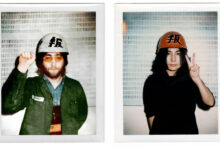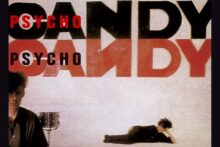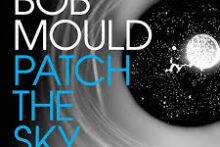From a vantage point of almost 40 years, it’s strange to think that such a stalwart band of the underground was featured on a 7″ release with a massive distribution in relative terms, even though the band they were covering, by this point, were then considered deeply unfashionable. In February 1986, NME – then selling around 100,000 copies a week – cover mounted a free, four-track vinyl EP called The Big Four. And there, alongside joint Album Of The Year winners Tom Waits (Rain Dogs) and The Jesus And Mary Chain (Psychocandy), plus the much-touted go-go band Trouble Funk, was Hüsker Dü’s live cover of The Beatles’ ‘Ticket To Ride’. In sharp contrast to their earlier speed-fuelled blitz through The Byrds’ psychedelic landmark ‘Eight Miles High’, this was a surprisingly faithful, though no less ferocious, rendition of the Fab Four’s 1965 standalone single. At a stroke, it marked the culmination of a year in which Hüsker Dü closed the door on their hardcore roots and opened another to evolve into something bigger, shaping not just their own future, but the sound of what came next.
It may be fanciful to call Hüsker Dü The Beatles of American hardcore punk but in hindsight, the comparisons are hard to resist. Zen Arcade (1984) kicked like a mule against punk orthodoxy not only by stretching to a double album, but also by daring to be a concept one at that. Barely pausing for breath, the trio spent the following year hitting escape velocity with two releases that left many of their contemporaries grounded. New Day Rising arrived in January 1985, followed just eight months later by Flip Your Wig with each release arguably surpassing the last. Both albums married a sharpened melodic sensibility to an increasing emotional honesty, carrying the band far beyond their hardcore constituency. And, much like The Beatles’ Rubber Soul and Revolver – also issued within eight months of each other – Hüsker Dü’s twin statements of 1985 feel inseparable, as if they were Volumes One and Two of another double album. Of course some might consider it heresy to cast their core songwriters of singer-guitarist Bob Mould and singer-drummer Grant Hart as their era’s very own Lennon and McCartney but broadly speaking, their respective modus operandi of searing introspection and romantic flair gave them a similar creative friction.
Hüsker Dü’s touring schedule was relentless – only April and August offered brief respites, one for studio work and the other for a brief pause from the road. The remainder of 1985 saw the band burning rubber across the United States and, eventually in the autumn, for a European tour, leaving little time for recovery. In May, for instance, they flew from Washington D.C. to London to perform a one-off gig at the Camden Palace for a TV show the next day, only to return immediately to resume their US tour in Cleveland, so beating out a near relentless rhythm of motion and exhaustion that might have felled lesser bands, but seemed only to fuel theirs.
And here they are at the starting line of that fateful year, the first steps on a journey that would leave an indelible mark on both them and those that followed. Spread – inevitably – over four slabs of vinyl, 1985: The Miracle Year assembles freshly unearthed live recordings split into two distinct halves. The first presents a full set from First Avenue in their hometown of Minneapolis, captured just a fortnight after New Day Rising hit the racks that January. What’s immediately clear is the sheer, visceral power at the heart of Hüsker Dü. Launching straight into that album’s eponymous opener, Grant Hart batters his drums with the ferocity of a mob enforcer collecting overdue protection payments, as out front, Bob Mould’s guitar detonates with weapons-grade force as Greg Norton’s bass keeps the orchestrated chaos grounded with granite solidity. Songs crash into each other at breakneck pace like a motorway pile-up rendered in sound, yet beneath the onslaught is a band already accelerating beyond its own limits. While older staples like ‘It’s Not Funny Anymore’, ‘Diane’ and ‘Pink Turns To Blue’ rub shoulders with the freshly minted ‘The Girl Who Lives On Heaven Hill’, ‘I Apologise’ and ‘If I Told You’, Hüsker Dü are already breaking new ground, previewing the yet-to-be-recorded Flip Your Wig with ‘Makes No Sense At All’, ‘Green Eyes’ and ‘Every Everything’. And for those who’ve spent the previous four decades frustrated at the sharp fade at the end of that recording of ‘Ticket To Ride’, here it is as it segues into a joyous reading of ‘Love Is All Around’, the theme song to the Minneapolis-set 70s sitcom The Mary Tyler Moore Show.
The second half of the boxset is culled from performances across 1985. Once again, these recordings catch Hüsker Dü outpacing themselves by weaving half of what would become their 1986 Warner Bros. debut album Candy Apple Grey into their setlists. ‘Don’t Want To Know If You’re Lonely’, ‘I Don’t Know For Sure’, ‘Hardly Getting Over It’, ‘Sorry Somehow’ and ‘Eiffel Tower High’ surface here not as tentative sketches but as fully formed songs signalling a band moving away from hardcore’s confines and diving headlong into deeper melodic and emotional currents. Greg Norton, so often overshadowed by the towering Mould and Hart, asserts himself with basslines that expand the songs’ horizons, none more so than on a revelatory reading of ‘Hardly Getting Over It’. The recordings are undeniably rougher here than the Minneapolis show, but this grit lends these versions a muscularity the studio takes never quite captured.
Taken as whole, these recordings go some way for making up for the fact that the SST-released New Day Rising and Flip Your Wig are unlikely to be remastered any time soon – if at all ever – though the hope remains that Warners will one day give a sonic polish to Candy Apple Grey, Warehouse: Songs And Stories – their second double and final studio album – and the posthumous live document The Living End, which captured Hüsker Dü on their final tour in 1987.
A vital artefact, 1985: The Miracle Year catches Hüsker Dü at their most inventive, straddling the line between hardcore ferocity and pop accessibility while revealing a potent mix of raw power, emotional maturity and musical ambition that helped pave the way for alternative rock’s emergence from the underground into the mainstream. But even stripped of their historical weight, these live recordings still sound absolutely and unapologetically fucking righteous.






